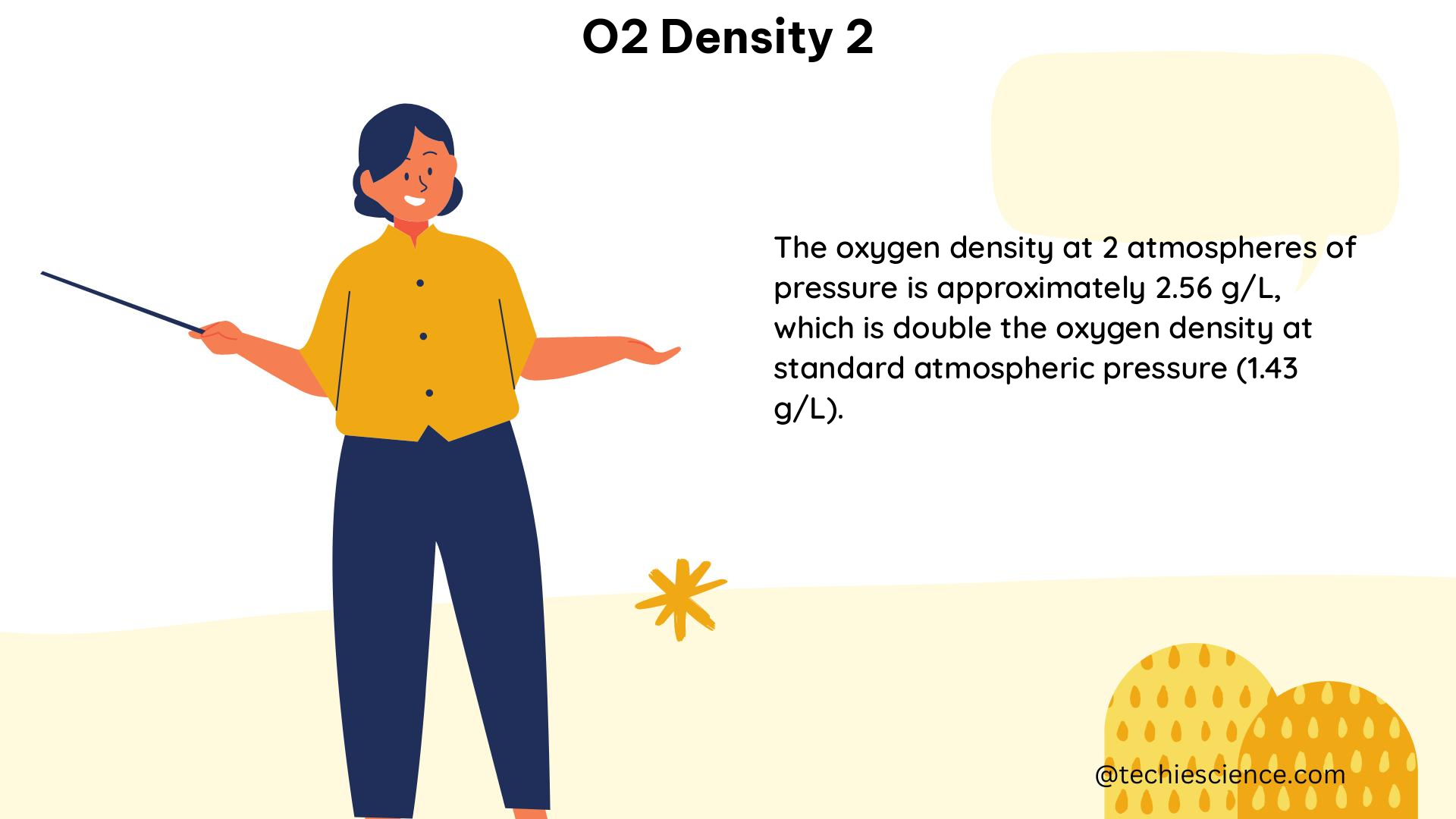Summary
Oxygen density, often denoted as [O₂], is a measure of the concentration of oxygen molecules in a given volume. This blog post delves into the specific case of the density of oxygen in its excited state 2, providing a comprehensive guide for physics students and researchers interested in this topic.
Understanding Oxygen Density Measurements

Measuring the density of oxygen, particularly in its excited states, involves the use of advanced spectroscopic techniques. These methods rely on the principles of quantum mechanics and atomic physics to detect and quantify the concentration of oxygen molecules in a given volume.
Spectroscopic Techniques for Oxygen Density Measurement
-
Absorption Spectroscopy: This technique involves the measurement of the absorption of light by oxygen molecules at specific wavelengths. The intensity of the absorbed light is directly proportional to the concentration of oxygen in the sample.
-
Emission Spectroscopy: In this method, the emission of light by excited oxygen molecules is measured. The intensity and wavelength of the emitted light can be used to determine the concentration of oxygen in the sample.
-
Laser-based Techniques: Techniques such as cavity ringdown spectroscopy (CRDS) and laser-induced fluorescence (LIF) utilize laser light to probe the transitions between energy levels in oxygen molecules, allowing for precise measurements of oxygen density.
Factors Affecting Oxygen Density Measurements
-
Pressure and Temperature: The density of oxygen is highly dependent on the pressure and temperature of the system. Careful control and monitoring of these parameters are crucial for accurate measurements.
-
Electromagnetic Field Strength: The presence of strong electromagnetic fields can influence the energy levels and transitions of oxygen molecules, affecting the measured oxygen density.
-
Collisional Effects: Collisions between oxygen molecules and other species in the system can alter the population of energy levels, leading to changes in the observed oxygen density.
Quantum Mechanical Principles in Oxygen Density Measurements
The energy levels and transitions of atomic and molecular oxygen are described by quantum mechanical models, such as the Schrödinger equation and the density matrix formalism. These models allow for the prediction of the spectral lines and intensities associated with specific transitions, which can be used to determine the concentration of oxygen in a given volume.
Density of Oxygen in the Excited State 2
The density of oxygen in the excited state 2, denoted as [O₂]*, is a specific case of oxygen density that has been the subject of various research studies. While the provided search results do not offer direct data on the density of oxygen in this excited state, they provide valuable insights into the methods and considerations involved in measuring and calculating oxygen densities in general.
Collisional Radiative Models for Oxygen Excited State Densities
One study presents a collisional radiative model (CRM) for the fast estimation and monitoring of atomic oxygen ground and excited state densities, including the density of oxygen in the excited state 2. The CRM takes into account the first seven states of atomic oxygen and the optical transitions between them, allowing for a comprehensive understanding of the oxygen excited state dynamics.
Factors Influencing Oxygen Excited State 2 Density
-
Plasma Conditions: The density of oxygen in the excited state 2 can be strongly influenced by the plasma conditions, such as pressure, temperature, and electromagnetic field strengths.
-
Collisional Processes: Collisions between oxygen molecules and other species in the system can lead to the population and depopulation of the excited state 2, affecting its measured density.
-
Optical Transitions: The transitions between the energy levels of oxygen, including the excited state 2, play a crucial role in determining the observed oxygen density.
Numerical Examples and Data Points
While the provided search results do not offer specific numerical data on the density of oxygen in the excited state 2, the following examples and data points from related studies can provide a general understanding of the order of magnitude and range of values:
-
Atomic Oxygen Ground State Density: A study reported measurements of the absolute concentration of ground state oxygen atoms produced in a low-pressure plasma, with values ranging from 10^12 to 10^14 atoms/cm³.
-
Oxygen Molecule Density: Another study on the quantitative measurements of molecular oxygen using EPR oximetry reported values for the parameters VO₂max, p50, and p0, which can be used to estimate the oxygen molecule density in various cell densities.
-
Oxygen Excited State Density Ratios: The collisional radiative model mentioned earlier provides insights into the relative populations of the first seven states of atomic oxygen, which can be used to estimate the density of the excited state 2 relative to the ground state and other excited states.
Conclusion
While the provided search results do not offer specific data on the density of oxygen in the excited state 2, they provide valuable insights into the methods and considerations involved in measuring and calculating oxygen densities. By understanding the underlying principles of quantum mechanics and atomic physics, as well as the various spectroscopic techniques used for oxygen density measurements, researchers and physics students can better approach the study of the density of oxygen in the excited state 2 and other excited states.
References
- Quantitative measurements of O₂ b ← X(2,1,0←0) bands by using electron paramagnetic resonance oximetry. (1999). ScienceDirect. https://www.sciencedirect.com/science/article/abs/pii/S000926149900192X
- Quantitative measurements of oxygen atom and negative ion densities in a low-pressure plasma. (2020). Oxford Academic. https://ora.ox.ac.uk/objects/uuid:419dc29e-60e3-4ef4-a9da-c15da6463220/files/rr781wg15v
- Determination of atomic oxygen state densities in a double inductively coupled plasma reactor using a collisional radiative model. (2020). IOP Science. https://iopscience.iop.org/article/10.1088/1361-6595/ab7cbe/pdf

The lambdageeks.com Core SME Team is a group of experienced subject matter experts from diverse scientific and technical fields including Physics, Chemistry, Technology,Electronics & Electrical Engineering, Automotive, Mechanical Engineering. Our team collaborates to create high-quality, well-researched articles on a wide range of science and technology topics for the lambdageeks.com website.
All Our Senior SME are having more than 7 Years of experience in the respective fields . They are either Working Industry Professionals or assocaited With different Universities. Refer Our Authors Page to get to know About our Core SMEs.